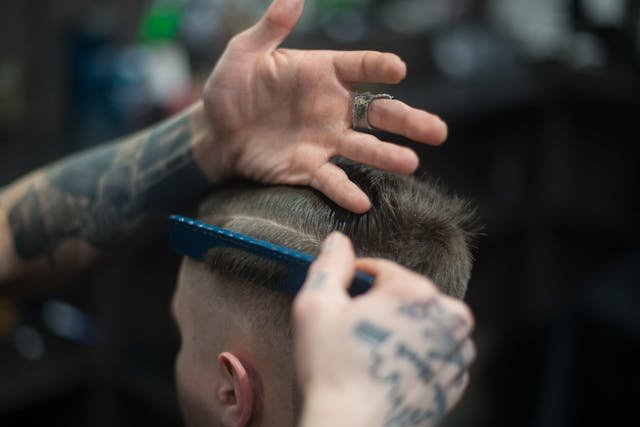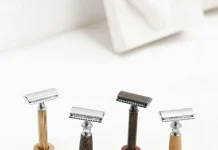Last Updated on June 5, 2025 by Rida Hamid
Table of Contents
Introduction
In the ever-evolving world of hairstyling and barbering, two terms have become increasingly prominent: “master barber” and “restricted barber.” These classifications not only distinguish levels of expertise and areas of specialization but also reflect a broader trend in the industry towards more defined roles and qualifications. This article delves into what sets these two apart and why understanding the difference is crucial for both professionals in the field and their clientele.
The Definition of Mastery: What Makes a Master Barber?
A master barber is recognized as the pinnacle of the barbering profession. This individual has not only completed the foundational training required of all barbers but has also pursued advanced coursework, often encompassing a wide range of hairstyling techniques, facial hair grooming, skin care, and sometimes even elements of cosmetology. Furthermore, a master barber usually has several years of experience under their belt, providing them with the practical knowledge and skills to handle complex styling and grooming tasks.
Advanced Training and Education
Master barbers have gone beyond the basic requirements of barbering licenses. They’ve completed extensive training that includes not only advanced haircutting techniques but also training in areas such as scalp and hair care, facial massage, shaving techniques, and sometimes even color theory and chemical processes related to hair. This comprehensive education ensures that a master barber can cater to a wide range of customer needs, from classic cuts to modern styling trends.
Experience and Expertise
Experience plays a crucial role in achieving the status of a master barber. This experience is not just about the number of years in the profession but also the breadth of knowledge gained through working with diverse client needs and hair types. Master barbers are known for their ability to execute a wide variety of styles with precision and their expertise in recommending styles that best suit their clients’ face shapes, hair types, and personal preferences.
Mastery of Tools and Techniques
Master barbers exhibit exceptional proficiency with a wide array of tools, from scissors and clippers to straight razors. Their skill set is not limited to cutting hair; they are also adept at beard trimming, shaping, and offering luxurious shaves. The mastery over these tools and techniques allows them to provide a superior grooming experience that goes beyond the basics of haircutting.
Understanding of Sanitation and Safety
An often overlooked but critical aspect of a master barber’s expertise is their rigorous adherence to sanitation and safety standards. They are well-versed in the best practices for disinfecting tools, maintaining a clean work environment, and ensuring that their techniques do not compromise the client’s safety. This knowledge is vital in providing a professional and safe grooming experience.
Customer Service and Consultation
Master barbers excel in customer service and consultation. They have the communication skills necessary to understand their clients’ desires and the expertise to guide them towards choices that enhance their appearance and meet their grooming needs. This consultative approach is what often sets master barbers apart, making them not just service providers but trusted advisors in matters of personal grooming.
Continuous Education
The beauty and barbering industry is always evolving, with new trends and techniques emerging regularly. Master barbers commit to continuous education, staying updated with the latest trends, products, and advancements in the field. This dedication ensures that they can offer the most current and fashionable styles, alongside timeless cuts.
The Role in the Community
Finally, master barbers often hold a respected place in their communities. Their barbershop can become a local hub, a place for social interaction and community building. The trust and respect they garner are not solely due to their skills with a pair of scissors but also their role as mentors, confidants, and community members. In summary, becoming a master barber is a journey of continuous learning, skill refinement, and dedication to the art and science of barbering. It’s a role that transcends the act of cutting hair, embodying the essence of craftsmanship, customer care, and community involvement.
Restricted Barbering: Specialization or Limitation?
On the other end of the spectrum, a restricted barber might sound like someone whose capabilities are limited, but in reality, this term often refers to professionals specializing in certain aspects of barbering. These individuals focus on specific services such as haircutting, without delving into the broader range of tasks that a master barber might undertake, such as shaving or chemical treatments. The “restricted” designation usually pertains to the scope of services they are licensed to offer, rather than their skill level.
Specialization in Hair Cutting and Styling
Restricted barbers focus primarily on haircutting, trimming, and basic styling. This focus allows them to perfect these services, catering to clients who seek straightforward hair maintenance and styling solutions. Their specialization ensures efficiency and expertise in delivering high-quality cuts, which can range from classic styles to more modern looks, depending on their training and experience.
Licensing and Training
The journey to becoming a restricted barber typically involves completing a specific number of hours in a barbering or cosmetology school, followed by passing a licensing exam. The requirements for this license are generally less stringent than those for a master barber, reflecting the more focused scope of services that restricted barbers are allowed to perform. Training for restricted barbers covers the basics of hair cutting, hygiene and sanitation, and sometimes an introduction to customer service and shop management.
The Role in the Barbering Industry
Restricted barbers play a crucial role in the barbering industry by providing essential hair cutting services to a wide demographic. Their work supports the core needs of the industry, ensuring that clients can always find reliable and skilled professionals to maintain their hair. Restricted barbers often work in traditional barbershops or salons where their specific skills complement those of master barbers and other beauty professionals.
Regulatory Restrictions
The specific services that restricted barbers are permitted to offer can vary significantly depending on local regulations. In some regions, their work is strictly limited to cutting hair, while in others, they may also be allowed to perform basic styling or use certain tools like blow dryers or standard clippers. Understanding these regulatory restrictions is essential for restricted barbers to ensure compliance with local laws and regulations.
Pathway to Becoming a Master Barber
For many, the restricted barber license is a stepping stone in their career. It allows individuals to enter the barbering profession, gain experience, and eventually pursue further education and training to become master barbers. This pathway is particularly appealing to those who wish to start working in the industry quickly and then gradually expand their skills and services.
Importance of Continuous Education
Even within their restricted scope of practice, these barbers benefit from continuing education to refine their skills, learn new cutting techniques, and stay informed about trends in hair styling. Workshops, online courses, and industry seminars can provide valuable opportunities for professional growth and development.
Contribution to the Community
Restricted barbers, much like their master barber counterparts, contribute significantly to their communities. They offer essential grooming services, foster social interactions, and support the local economy. Their shops can become places where people not only come for haircuts but also for camaraderie and community connection.
In summary, restricted barbers are vital to the barbering industry, offering specialized services that cater to basic hair care and styling needs. Their role is defined by their focused skill set, adherence to regulatory standards, and their potential pathway to broader expertise and services. Through their dedication to their craft, restricted barbers ensure that clients receive high-quality, specialized care that meets their immediate grooming needs.
Trending Topics in the Barbering World
The barbering industry is witnessing several trends that highlight the importance of the distinction between master barbers and restricted barbers:
- Increased Specialization: As the demand for bespoke grooming services grows, so does the need for barbers who specialize in particular areas. This trend underscores the value of restricted barbers who excel in specific services.
- Regulatory Changes: Across various regions, regulatory bodies are revising the requirements for barber licensing, affecting the qualifications needed to be recognized as a master barber or a restricted barber. Keeping abreast of these changes is crucial for professionals in the industry.
- Consumer Preferences: Today’s clients are more informed and selective about their grooming choices. This discernment has led to a greater appreciation for the specialized skills of master barbers, who can offer a comprehensive grooming experience.
- Educational Opportunities: The rise in specialized training programs and workshops for barbers reflects a growing emphasis on continuous education in the industry. These opportunities enable aspiring master barbers to gain the expertise needed to advance their careers.
Conclusion
Understanding the distinction between master barbers and restricted barbers is more than a matter of semantics; it’s about recognizing the depth of expertise and the breadth of services that define today’s barbering industry. Whether you’re a professional aiming to enhance your skills or a client seeking the best grooming experience, appreciating the nuances between these two roles is essential. As the industry continues to evolve, staying informed about these trends will ensure that both barbers and their clients can make the most of the opportunities that lie ahead.
















